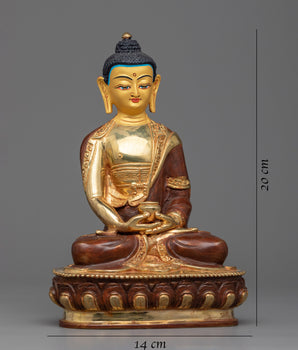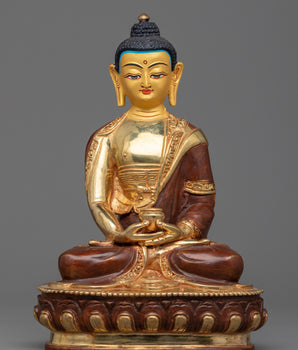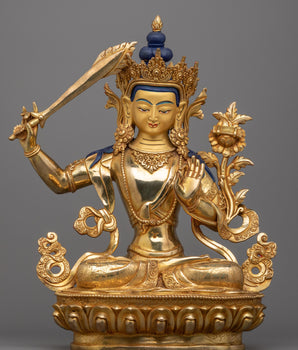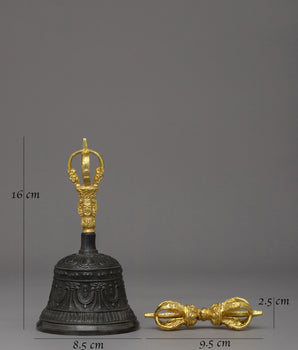





Spiritual Mantra Prayer Wheel | Symbol of Peace and Devotion

100% AUTHENTIC

HANDMADE

FREE SHIPPING
Spiritual Mantra Prayer Wheel | Traditional Himalayan Buddhist Art
-----------------------------------------
Size: 10.5cm (Height) x 5cm (Width)
Weight: 0.0062kg
Materials: Brass, Copper
------------------------------------------
About our Prayer Wheel
This Spiritual Mantra Prayer Wheel is a strong symbol of dedication and attention in Tibetan Buddhism. Its exquisite shape is suitable for personal meditation places, shrines, or sacred corners, measuring 10.5cm in height and 5cm wide. The outside cylinder bears the ancient mantra Om Mani Padme Hum, which is said to inspire compassion, serenity, and enlightenment. Each turn of the wheel is claimed to release innumerable prayers, bringing positive energy, peace, and harmony to the surroundings.
This prayer wheel, expertly created from brass and copper, exemplifies the skill of Himalayan artisans who uphold centuries-old traditions. The combination of metals lends depth and warmth to the design, while the mantra inscriptions and exquisite embellishments elicit a strong spiritual response. The wheel's spinning promotes meditation, grounding, and focus, while also serving as a sacred reminder of compassion and the interdependence of all beings.
Introduction to Prayer Wheel
A prayer wheel is cylindrical on a spindle and is used in Tibetan Buddhism. It is typically inscribed with the mantra "Om Mani Padme Hum" and rotated by hand as a form of spiritual practice and to accumulate merit. Spinning the wheel is believed to have the same spiritual benefits as verbally reciting the mantra. The use of prayer wheels is widespread in Tibetan Buddhism and has spread to other cultures.
How does the Buddhist Prayer Wheel benefit us?
The benefits associated with rotating the wheel are numerous. It promotes knowledge, compassion, and bodhicitta in the practitioner and improves siddhis (spiritual powers such as clairvoyance, precognition, etc.). The practitioner can repeat the mantra as often as possible while the wheel is rolling, maintaining a calm, meditative attitude. A Tibetan Buddhist tradition holds that after a practice session, one should dedicate any acquired merits to the benefit of all sentient beings. Then three times Om Ah Hum. This is usually among Tibetans after finishing any Buddhist practice, including the prayer wheel exercise.
How do you set up your own Buddhist Shrine?
• Find a clean, quiet, and uncluttered spot
• Set up an altar table and cover it with an altar cloth that calls to you
• Place your sacred item at the center
















